a nice audiophile gathering
This weekend i had the visit of two fellow audiophile enthusiasts from Salvador de Bahia, a nearby city, a 4h car ride from Aracaju, where i life.
They came to listen my system, and took the oportunity, to hear the systems at two other places.
Dario wrote about the impression of the meeting, it can be read at my forum :
http://www.audiovoice-acoustics.com/forum/showthread.php?t=650
Angelo
This weekend i had the visit of two fellow audiophile enthusiasts from Salvador de Bahia, a nearby city, a 4h car ride from Aracaju, where i life.
They came to listen my system, and took the oportunity, to hear the systems at two other places.
Dario wrote about the impression of the meeting, it can be read at my forum :
http://www.audiovoice-acoustics.com/forum/showthread.php?t=650
Angelo
inroom frequency response
Today i made some inroom spl measurments of my system with a Radio Shack SPL meter.
Distance from the speakers was around 13 feet / 4m, and calibration at 80db/1000hz.
Above 400hz, i measured twice, getting small differences.
Below the results. What is remarkable, ist that above 7khz, spl decreases rapidly. I didn't expect this.... the Lpad of the tweeter was fully open. Since the Coral H104 has 110db/wm, could that be explained just with the interaction of the room ?
Angelo
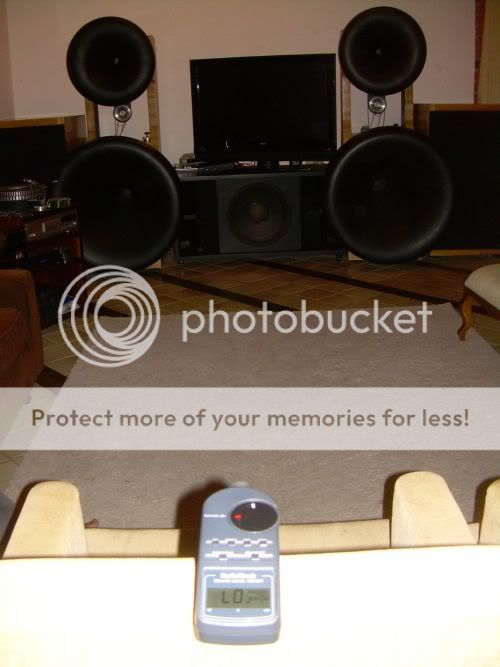
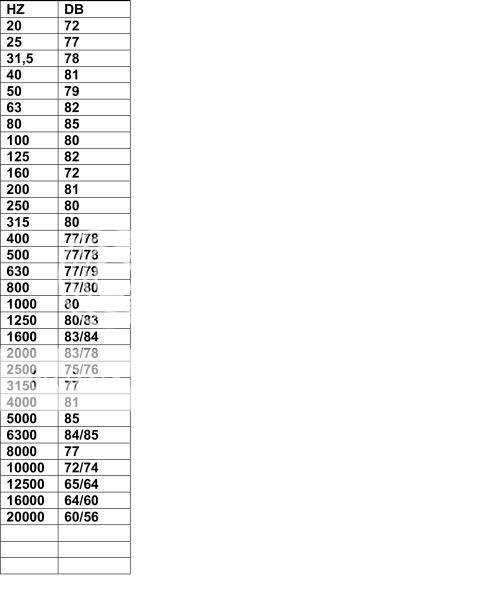
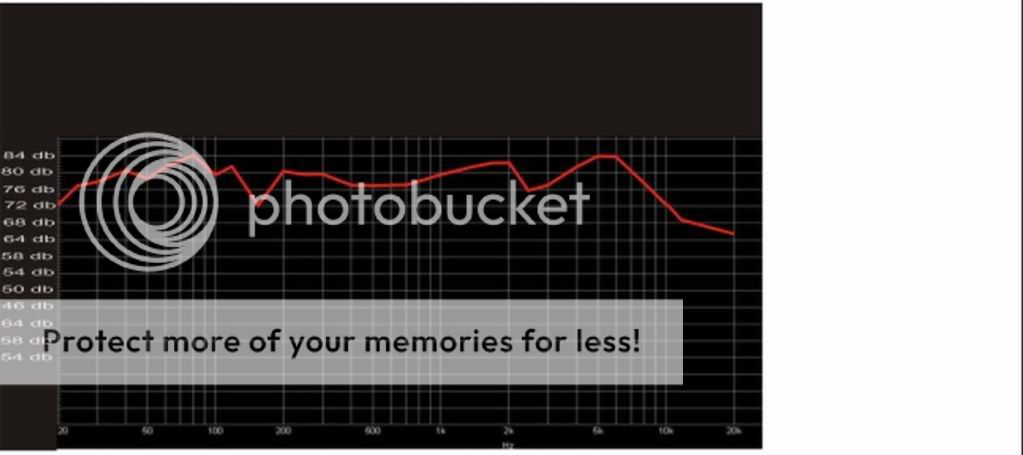
Today i made some inroom spl measurments of my system with a Radio Shack SPL meter.
Distance from the speakers was around 13 feet / 4m, and calibration at 80db/1000hz.
Above 400hz, i measured twice, getting small differences.
Below the results. What is remarkable, ist that above 7khz, spl decreases rapidly. I didn't expect this.... the Lpad of the tweeter was fully open. Since the Coral H104 has 110db/wm, could that be explained just with the interaction of the room ?
Angelo



Step one: determine the flatness of your inexpensive SPL meter above 7kHz.
Step two: build a "mitey mike" measurement mic or buy a Behringer measurement mic
Step three: install some speaker FFT software on your computer
Step 4: measure the drivers near field and far field individually
Step 5: look at the system response
Step 6: go back and look at the combined response of TWO drivers using the FFT software. Look at the impulse response, adjust the physical relationship (front to back) for best combined impulse, and adjust the xover there, rinse & repeat.
(for example start with the tweeter and upper mid first)
Step 7: now adjust the relationship between the upper mid and mid driver
Step 8: work through the system in pairs (you could start with any pair that makes sense - like from a driver that is not adjustable in position for example)
Step 9: look at the overall response
Step 10: repeat and modify as required
You can also measure the tweeter nearfield to see if it is "flat" up close using the SPL meter, just to compare.
Multi-way systems of this sort are problematic.
Also, I would move the horns toward the corners of your room, for a better stereo image, they seem too close to each other given your listening position. Either that or sit 50% closer than you are now.
_-_-bear
Step two: build a "mitey mike" measurement mic or buy a Behringer measurement mic
Step three: install some speaker FFT software on your computer
Step 4: measure the drivers near field and far field individually
Step 5: look at the system response
Step 6: go back and look at the combined response of TWO drivers using the FFT software. Look at the impulse response, adjust the physical relationship (front to back) for best combined impulse, and adjust the xover there, rinse & repeat.
(for example start with the tweeter and upper mid first)
Step 7: now adjust the relationship between the upper mid and mid driver
Step 8: work through the system in pairs (you could start with any pair that makes sense - like from a driver that is not adjustable in position for example)
Step 9: look at the overall response
Step 10: repeat and modify as required
You can also measure the tweeter nearfield to see if it is "flat" up close using the SPL meter, just to compare.
Multi-way systems of this sort are problematic.
Also, I would move the horns toward the corners of your room, for a better stereo image, they seem too close to each other given your listening position. Either that or sit 50% closer than you are now.
_-_-bear
here are some usefull links about radio shack meters
http://www.avsforum.com/avs-vb/showthread.php?t=505236
http://www.avsforum.com/avs-vb/showthread.php?t=505236
hi Bear
thanks for your response. I'll check it out.
hi Brett
there came a local friend of mine over with the Radio Shack meter, to make a quick test. I've bought already a decent mic, pre, and soundcard. I'll hook it up soon, and will start to make some decent measurings...
Angelo
thanks for your response. I'll check it out.
hi Brett
there came a local friend of mine over with the Radio Shack meter, to make a quick test. I've bought already a decent mic, pre, and soundcard. I'll hook it up soon, and will start to make some decent measurings...
Angelo
About time.angeloitacare said:and will start to make some decent measurings...
Angelo
hi guys
a up-date of my system : recently i moved to a new house, where i build a dedicated listening room. Some description at my forum :
My new listening room - Audio Voice Acoustics
yesterday i made some measurements :
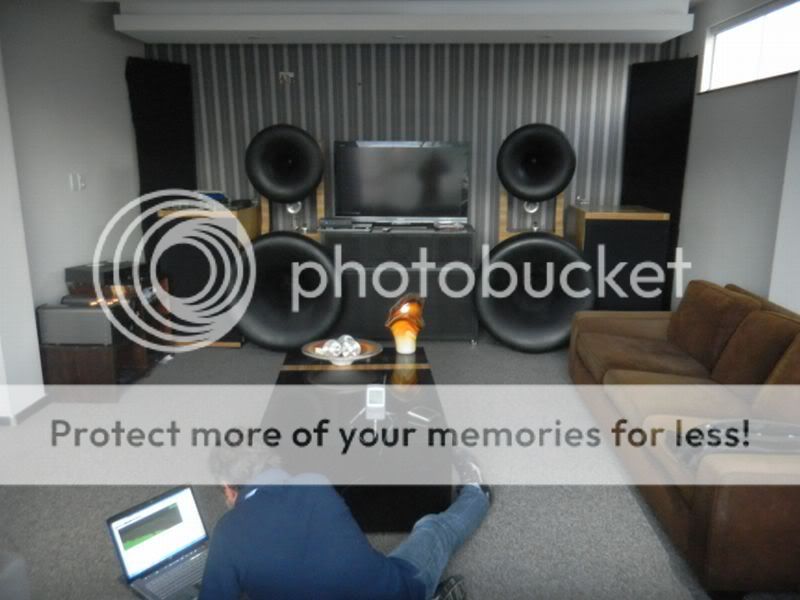
the room is not 100% finished. The diffusers and absorbers are not yet installed, but the result is already quit good.....
a up-date of my system : recently i moved to a new house, where i build a dedicated listening room. Some description at my forum :
My new listening room - Audio Voice Acoustics
yesterday i made some measurements :

the room is not 100% finished. The diffusers and absorbers are not yet installed, but the result is already quit good.....
Until today, i was not 100% satisfied with bass response. The energy of the basshorn did emanate and load only the low half of the room, while i was wishing a even vertical response and load of the whole room. So i stacked my smaller Audax bass , wired it in parallel with the basshorn, and bingo !! another BIG improvement in my system. Bass now is distributed even in the whole room, and sounds soft and warm, but defined, controlled, with a lot of energy and punch at the same time. Wonderful !! Just wonderful !! F*** , why did i not think about try that out earlyer ?!! Whatever..... such experiments make our hobby so exiting. Moral of the story : To have good bass, just one woofer is not enough. The best is to stack them, and make a line array. Try new things out, and come closer and closer to the real thing is always exciting....
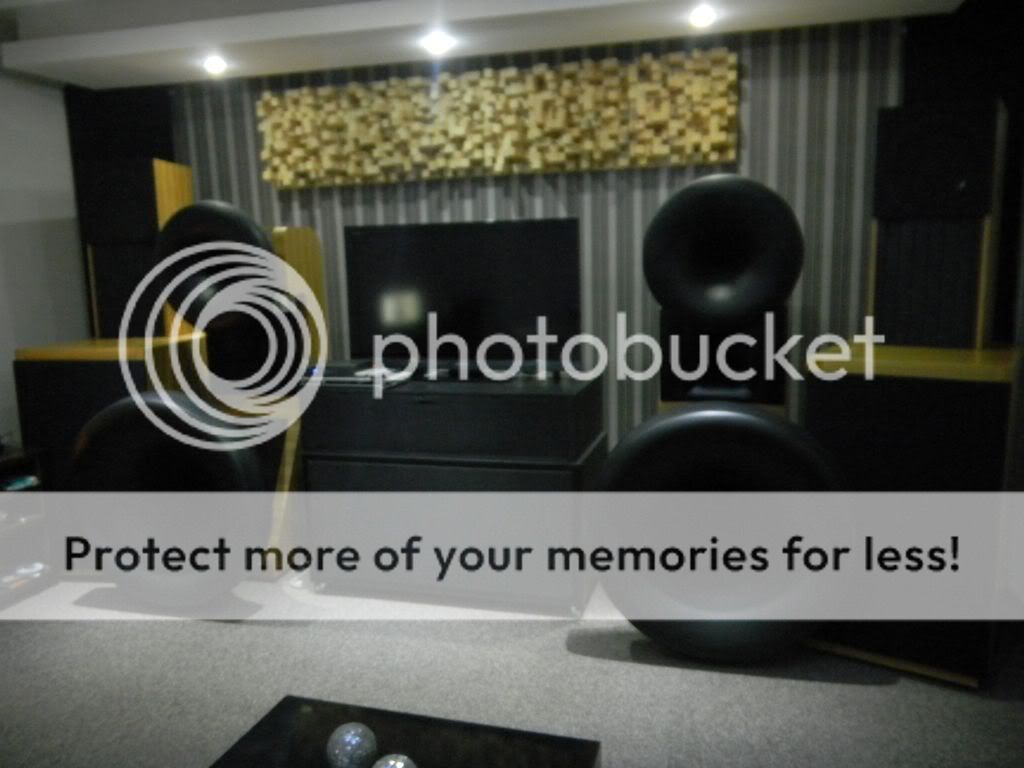
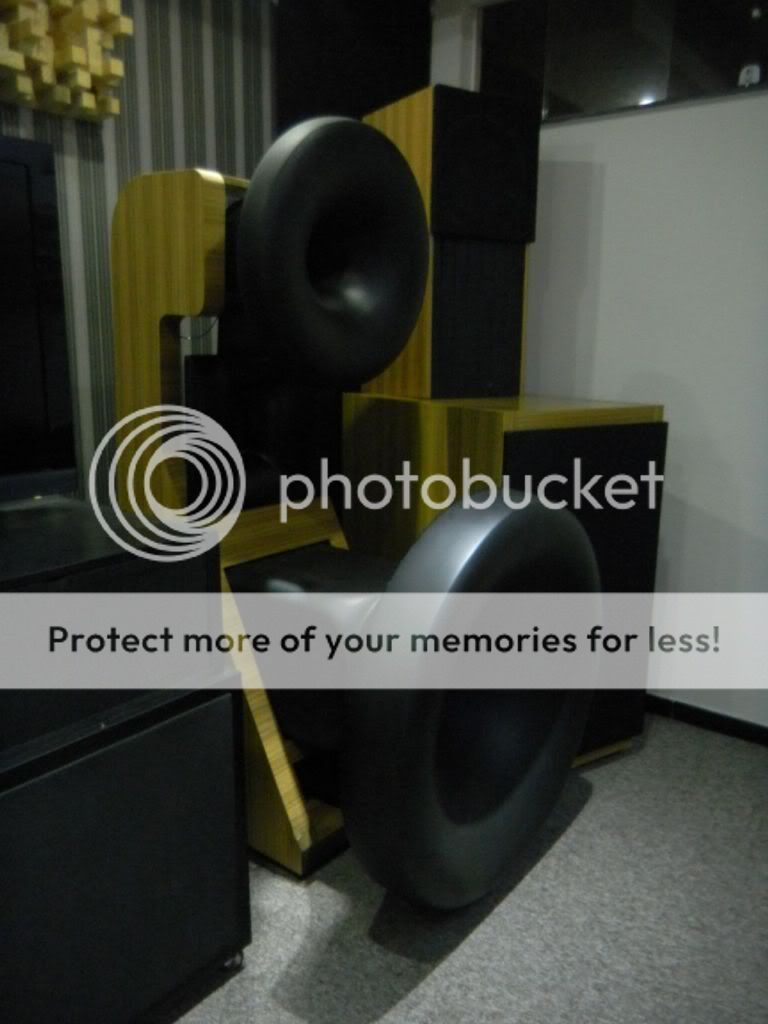


i added a pair of Onken W style woofers to the basshorn.....
my physcial space now is on the limit - and the patience of my wife as well...
how it sounds ? good, so far...
http://www.audiovoice-acoustics.com/forum/showthread.php?t=405&page=3


my physcial space now is on the limit - and the patience of my wife as well...
how it sounds ? good, so far...
http://www.audiovoice-acoustics.com/forum/showthread.php?t=405&page=3

fmitga, is that a center channel speaker that's bigger than your tv?
yes, and its horn loaded. But right now, i am not using it.
yes, and its horn loaded. But right now, i am not using it.
That's pretty impressive. I notice you have a diffusion panel at the front, do you have any diffusion / absorption at the back of the room?
I'd really like to experiment with a big horn system someday, it looks wonderful.
That's pretty impressive. I notice you have a diffusion panel at the front, do you have any diffusion / absorption at the back of the room?
I'd really like to experiment with a big horn system someday, it looks wonderful.
hi
i have curtains on the back wall. On this video the whole room can be seen :
[youtube]Y6MMRhrhmR4&feature=player_embedded[/youtube]
today i started some experiments. I disconnected the lower midrange horn, and connected the Altec's . So they cover only the lower midrange . It seems that is a interesting direction to explore. I feel the necessity of using a digital crossover, so it will be easyer to make experiments. Maibe a mini-dsp would do the job....
hi
i have curtains on the back wall. On this video the whole room can be seen :
[youtube]Y6MMRhrhmR4&feature=player_embedded[/youtube]
today i started some experiments. I disconnected the lower midrange horn, and connected the Altec's . So they cover only the lower midrange . It seems that is a interesting direction to explore. I feel the necessity of using a digital crossover, so it will be easyer to make experiments. Maibe a mini-dsp would do the job....
MiniDSP is a really nice tool to have, you can do pretty much anything with it.
I removed high-pass, so the Altecs play now from ~ 40hz up to 1,2khz, and parallel the bass horn. Thats really a new dimension of bass punch, speed, definition and power. Just wonderful. Really wonderful. I am having a lot of fun now. I did not imagine, that a bass line array could make such a difference. It seems that the wide frequency reproduction range of the Altecs contribute a lot to integrate the whole system. Right now, the lower midrange horn is not connected. But i will connect it next week in series to the Altecs and see what happens.....
- Status
- This old topic is closed. If you want to reopen this topic, contact a moderator using the "Report Post" button.
- Home
- Loudspeakers
- Multi-Way
- a big toy to play with....